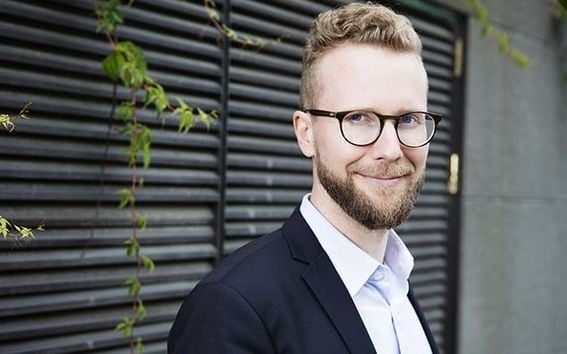Ultrasound can help treat cancer and osteoarthritis

Assistant Professor Heikki Nieminen, what are you researching and why?
I am working with medical ultrasound technology. High-power ultrasound can be used as an invisible tool to enable, for instance, the delivery of drugs or small objects inside tissue without damaging the tissue. This means that it will be possible to perform surgery and microsurgery very locally inside the body and in a controlled manner from the surface of the skin. In practice, a cancer drug, for instance, could be directly targeted at a brain tumour with the help of ultrasound. With ultrasound surgery, a patient can be fully functional just one or two days later; with surgery in which a scalpel is used, it can take weeks or even months to recover. With the help of ultrasound, it is therefore possible to provide effective treatments, while avoiding many negative side effects outside the area being treated.
My current topic of research is ultrasound-assisted fine needle aspiration biopsy, a new kind of method for obtaining tissue samples. The research project funded by the Academy of Finland is studying and improving the taking of samples from suspected tumours with the help of high-power sound. The aim is to obtain earlier and more reliably tumour diagnoses than can be done with current technology. With some cancers, the taking of samples fails one time in three, which can delay prognosis and delay the start of treatment. Considering how common cancers are – that one in three women or every second man will get cancer at some time in their lives – this new biopsy method could benefit a large number of people and entire societies.
Another one of my key topics of research is linked with osteoarthritis, in which the treatment of joint cartilage damage is hampered by the lack of blood circulation in the damaged cartilage. Medicines administered by injection or taken orally can be distributed within the entire organism through the bloodstream and can cause harmful side effects outside the damaged area. With ultrasound, cartilage can be treated locally by delivering molecules of medicine to the damaged part of joint cartilage. Our aim is not just to delay, but in the future to actually stop the progression of the disease.
How did you end up as a researcher?
The first inspiration came from my physics studies and a summer job at a laboratory in what was at the time University of Kuopio. I was accepted as a graduate student into a research group studying the characteristics of joint cartilage with the help of ultrasound, and I wrote my doctoral dissertation on the subject in 2007. I found the commercialisation of ultrasound technology to be very inspiring, and I worked for a few years in the industry – in research and development at Philips. After that I returned to the world of academia, first to the University of Helsinki and the University of Oulu, and then to Aalto.
As a researcher I am especially inspired by translating research methods to hospitals where they can be applied in clinical use. The commercialisation of new technologies and methods is a good way to achieve this goal. At Aalto the proximity to the innovation activities and industry in the field offers good opportunities for this.
What have been the high points of your career?
I am very excited about biopsy technology research. It has made quick progress, and a clinical application is already under development. It is also magnificent that I can set up my own laboratory and my own research group around ultrasound research. It has also been gratifying to see that big questions facing the world, concerning the developing countries, for instance, have been raised in the funding of research in recent times. These are also questions for which I would like to find concrete solutions.
What is the most important characteristic of a researcher?
It all starts from a search for the truth. This includes maintaining a critical mind, and also thinking about research through creativity and the goal of the generating benefit to the human kind in the future.
What is the most important thing that you want to pass on to your students?
I find that I learn a lot from my students and colleagues. I hope that the students will learn to perceive the impact of their own work and to see their work as part of the big picture. The bar needs to be set high if it is to lead to growth also in areas that you do not yet master.
What do you expect from the future?
I hope that I can be involved in creating the kind of clinical application that would broadly benefit a significant part of the world population. This idea drives me forward and hopefully it will also be something that I can remember as I sit in a rocking chair someday.
Medical Ultrasonics Laboratory (MEDUSA) at the Dept. of Neuroscience and Biomedical
Engineering
Photo: Lasse Lecklin
- Published:
- Updated:
Read more news

Get to know us: Associate Professor Maria Sammalkorpi
Sammalkorpi received her doctorate from Helsinki University of Technology 2004. After her defence, she has worked as a researcher at the Universities of Princeton, Yale and Aalto.
Aalto computer scientists in ICML 2024
Computer scientists in ICML 2024
Getting bacteria into line
Physicists use magnetic fields to manipulate bacterial behaviour